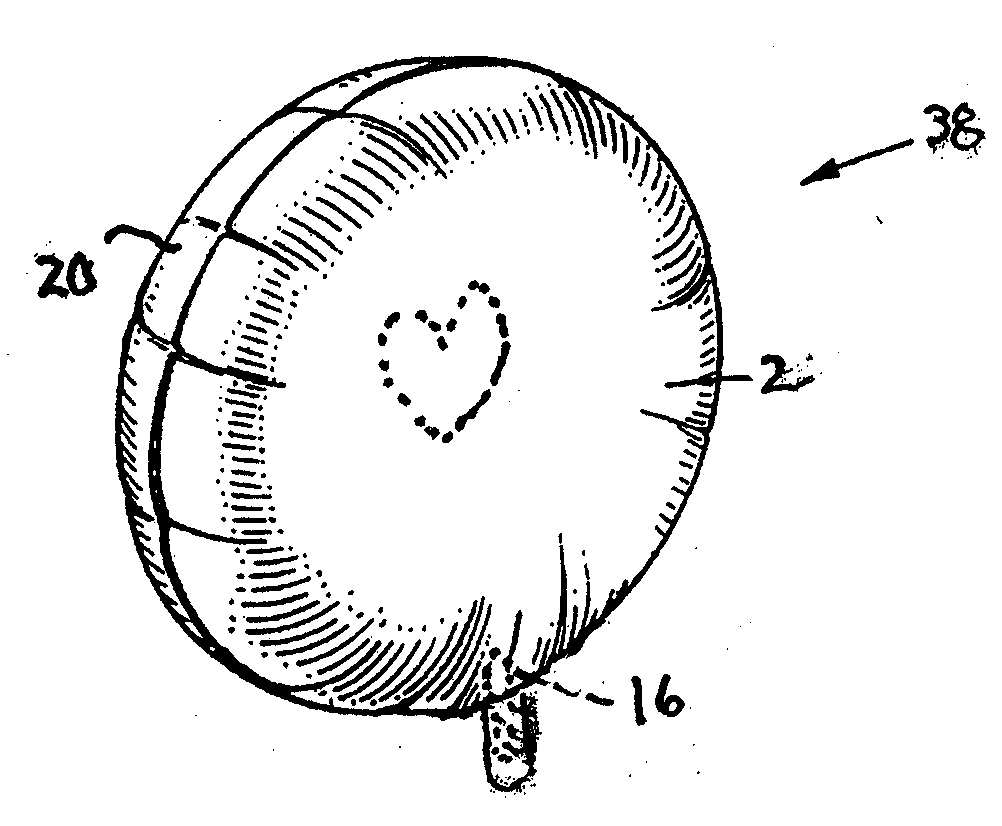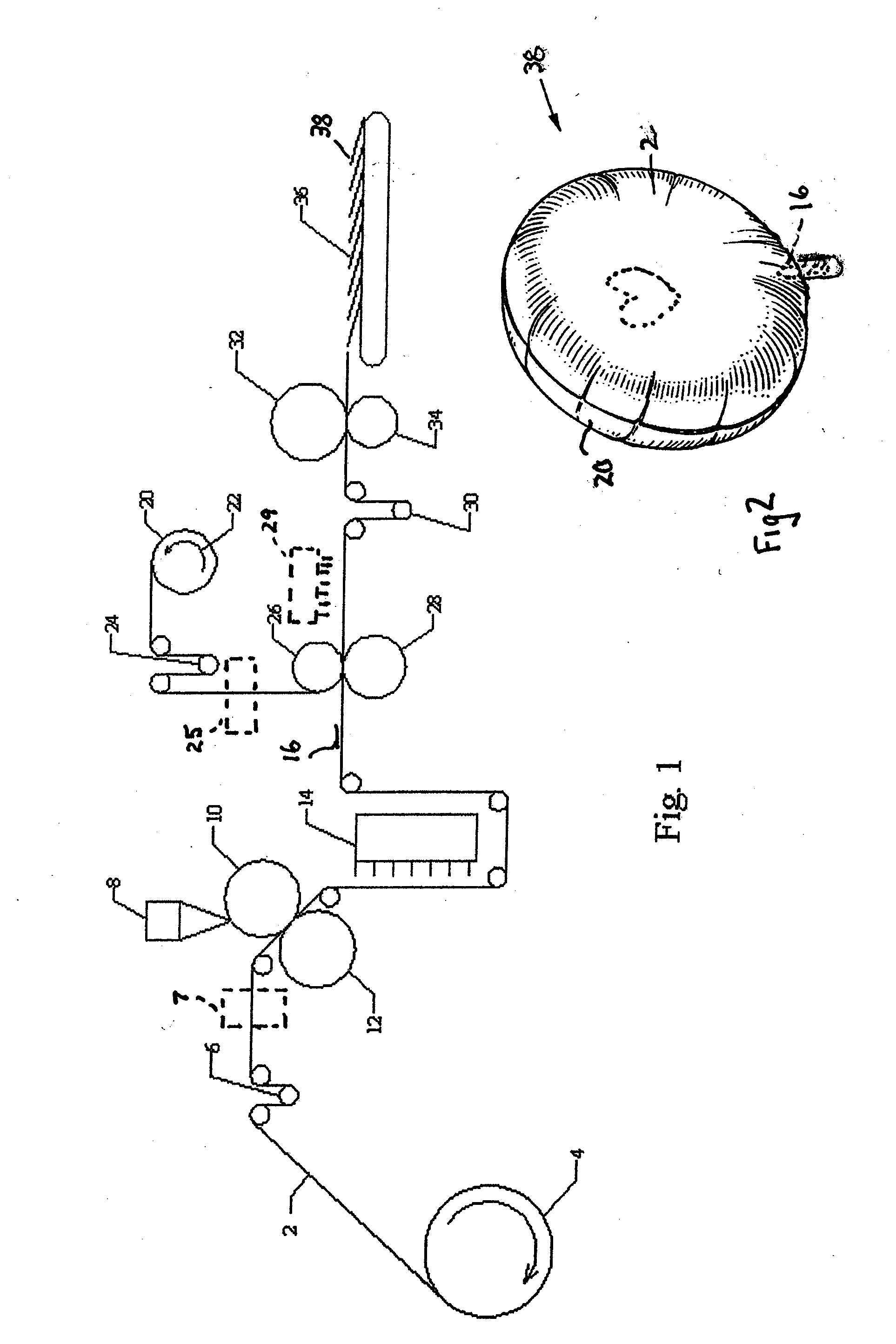Localized sealant application in aerostats
a sealant and aerostat technology, applied in the field of aerostats, can solve the problems of adversely affecting the lifting capacity, etc., and achieve the effects of reducing the overall weight of the aerostat, limiting the physical size of the aerostat, and cost saving
- Summary
- Abstract
- Description
- Claims
- Application Information
AI Technical Summary
Benefits of technology
Problems solved by technology
Method used
Image
Examples
Embodiment Construction
[0014]The present invention applies an adhesive onto one or more barrier films at the desired point of bonding between the films. The method of applying an adhesive at the desired point of bonding can be accomplished by coating techniques such as flexographic printing, inkjet printing, roll transfer, or silk screening techniques. The adhesive is applied about the periphery in some applications after the printing of desired art or graphics and just prior to the point of bonding the two barrier films together. The method of the present invention results in aerostats with a bond line at the edge of the desired shape. The reduced weight, in comparison to conventional practices employing a heat sealing layer, enables intricate designs and smaller volume aerostats.
[0015]Those of ordinary skill in the art of manufacturing aerostats, such as novelty balloons, recognize that barrier films are necessary to prevent the depletion of the lighter than air gas from the balloon. For purposes of the...
PUM
| Property | Measurement | Unit |
|---|---|---|
| Linear density | aaaaa | aaaaa |
| Volume | aaaaa | aaaaa |
| Weight | aaaaa | aaaaa |
Abstract
Description
Claims
Application Information
 Login to View More
Login to View More - R&D
- Intellectual Property
- Life Sciences
- Materials
- Tech Scout
- Unparalleled Data Quality
- Higher Quality Content
- 60% Fewer Hallucinations
Browse by: Latest US Patents, China's latest patents, Technical Efficacy Thesaurus, Application Domain, Technology Topic, Popular Technical Reports.
© 2025 PatSnap. All rights reserved.Legal|Privacy policy|Modern Slavery Act Transparency Statement|Sitemap|About US| Contact US: help@patsnap.com


